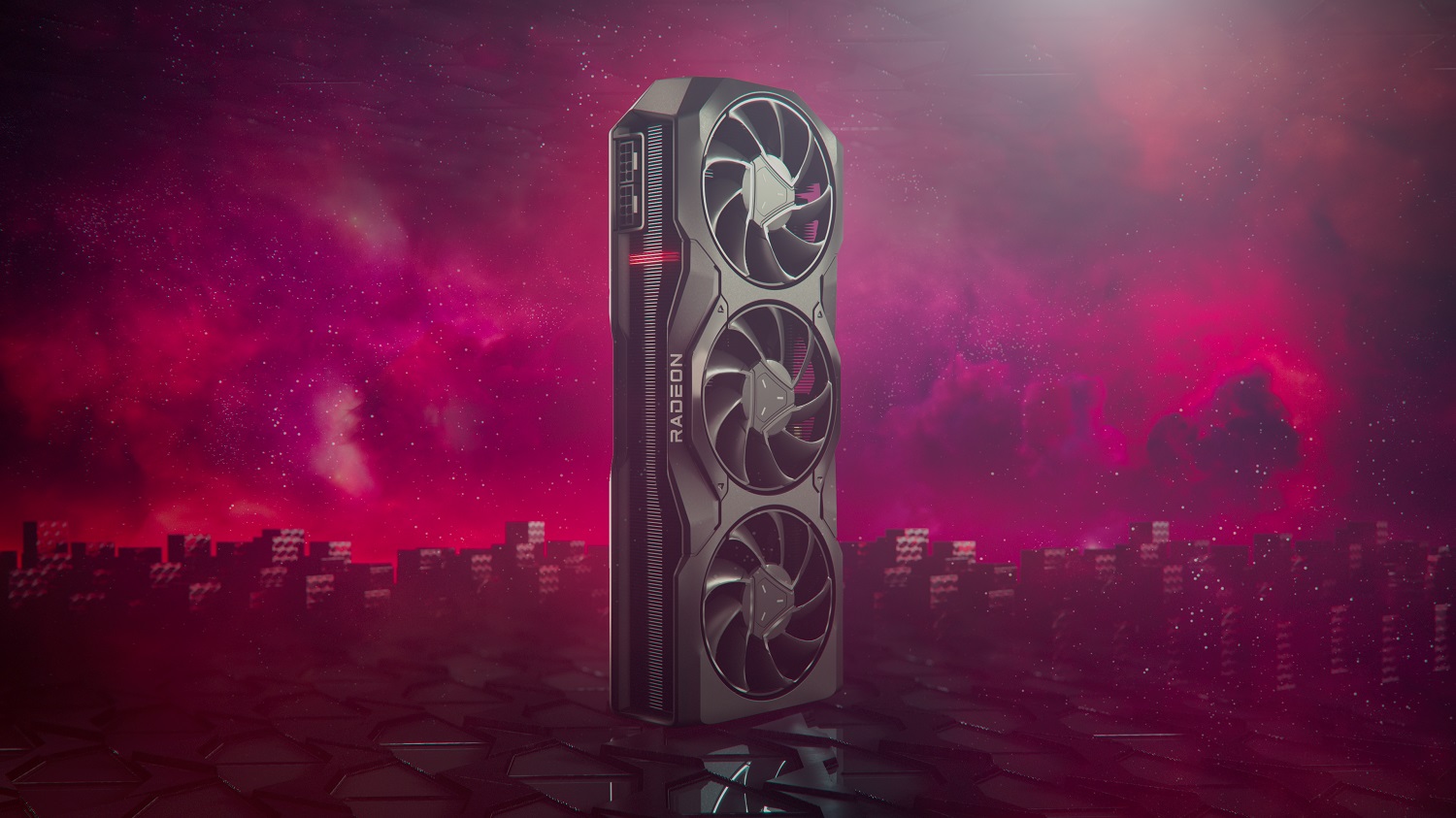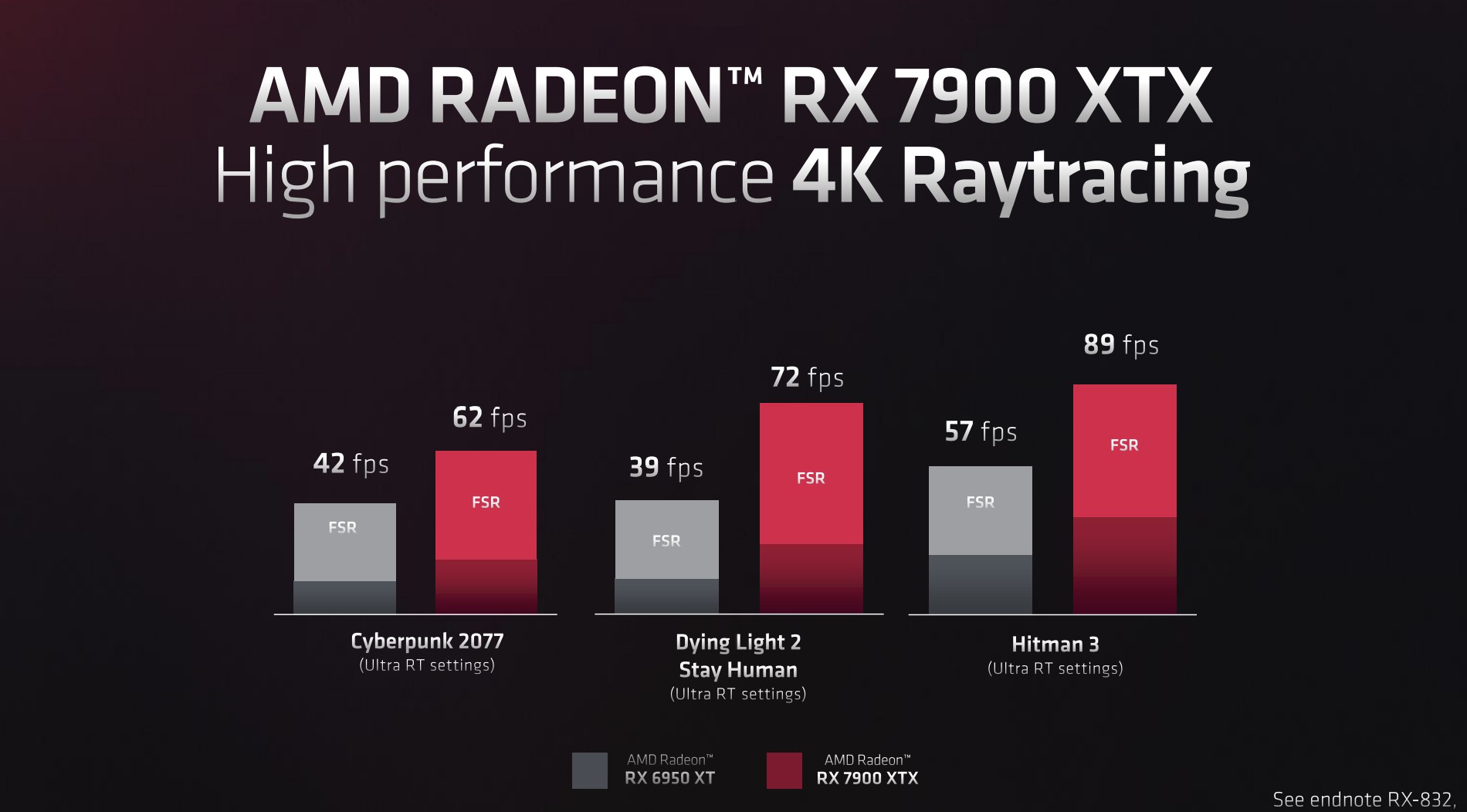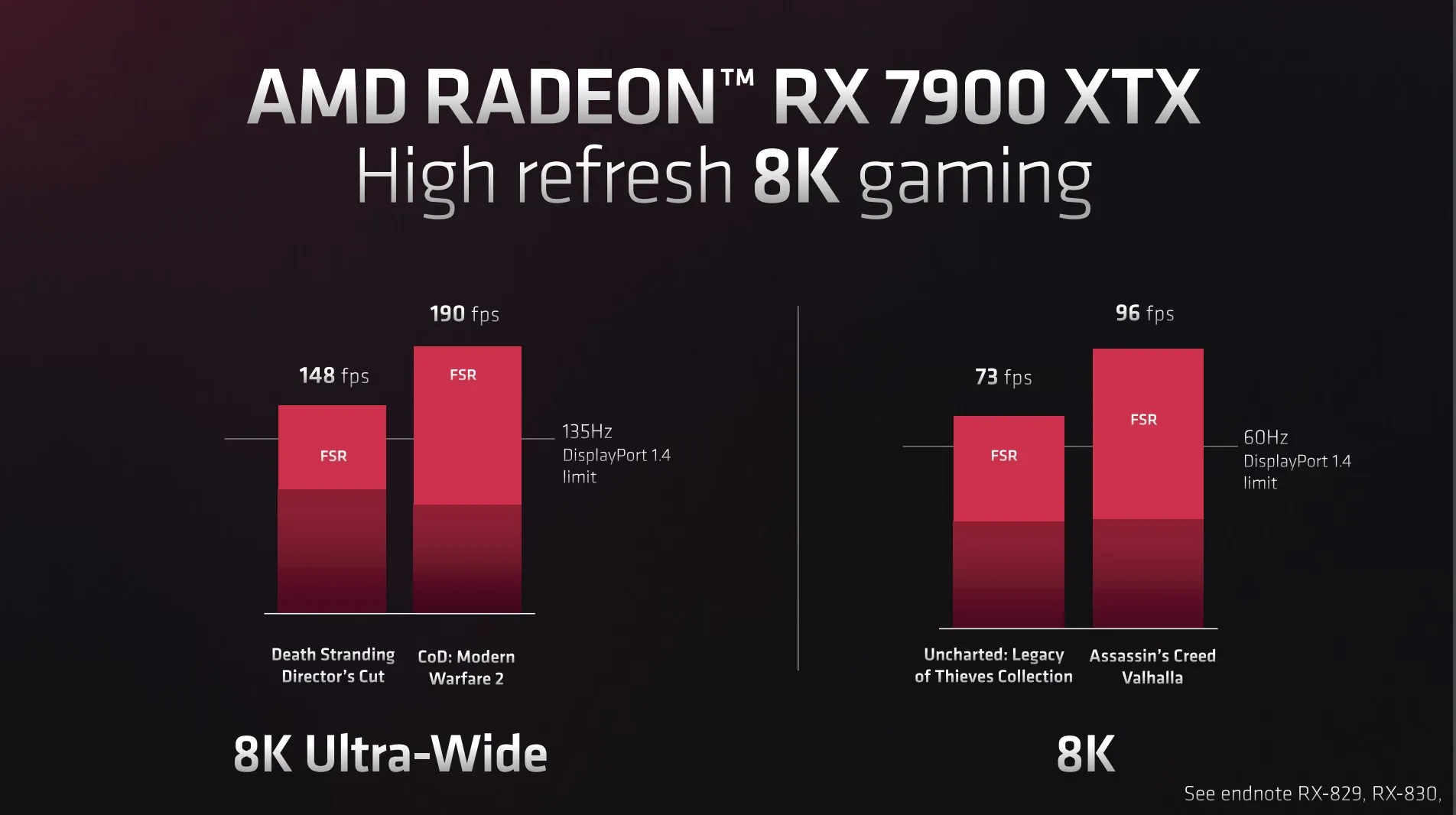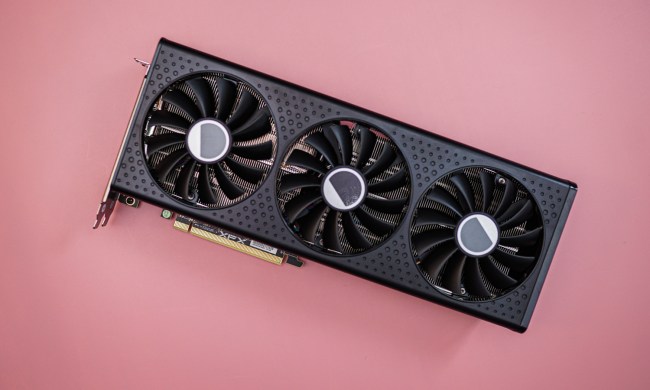AMD isn’t jumping on the bandwagon of rising GPU prices. The company announced the RX 7900 XTX and RX 7900 XT at its RDNA 3 launch event, and contrary to speculation on the heels of the RTX 4090, AMD isn’t raising prices. The RX 7900 XTX launches at $1,000 and the RX 7900 XT at $900, and they’ll be available on December 13.
Although AMD was light on hard performance numbers, instead opting for relative performance graphs and frame rates with FidelityFX Super Resolution (FSR), AMD executives went deep on the new architecture and the improvements it could bring to gamers. For starters, the new compute unit (CU) includes a second-generation ray tracing accelerator, which AMD says brings up to a 50% improvement in ray tracing performance over the previous generation.
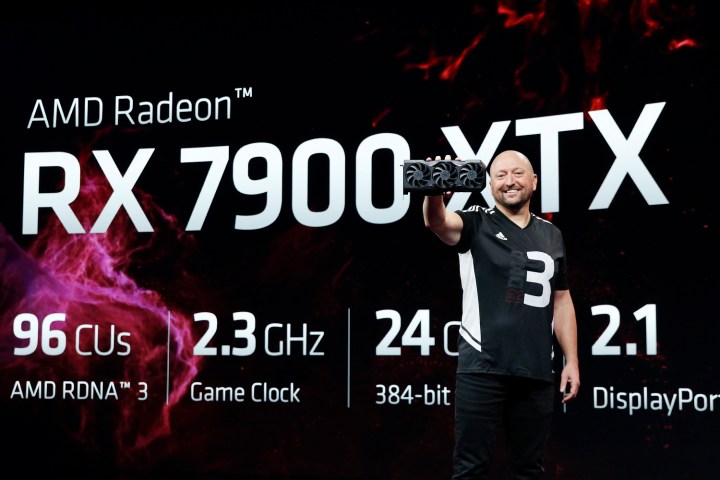
Ray tracing was a major shortcoming for AMD’s previous-gen RX 6000 cards. Similarly, the lack of dedicated AI acceleration hardware like Nvidia uses was a common criticism. The new design includes two AI accelerators per CU, which AMD says provides up to 2.7x better AI performance. The company focused heavily on the inclusion of DisplayPort 2.1, too, which is an area where AMD now has an advantage over Nvidia.
Both the RX 7900 XTX and RX 7900 XT support DisplayPort 2.1, allowing for 1440p at up to 900Hz, 4K at up to 480Hz, and 8K at up to 165Hz. The RTX 4090 still uses DisplayPort 1.4, despite surpassing the capabilities of the standard in some instances. Although it’ll be many years before we see the full benefit of DisplayPort 2.1, AMD’s latest cards are set up to take advantage of the standard once it’s more common.

Of course, support for higher refresh rates at higher resolutions doesn’t matter if the new AMD cards can’t deliver the performance goods. Overall, AMD says the RX 7900 XTX is up to 1.7 times faster than the RX 6950 XT at 4K. In performance per watt, which is a metric that focuses on efficiency over raw performance, AMD says the new architecture delivers a 54% improvement over RDNA 2.
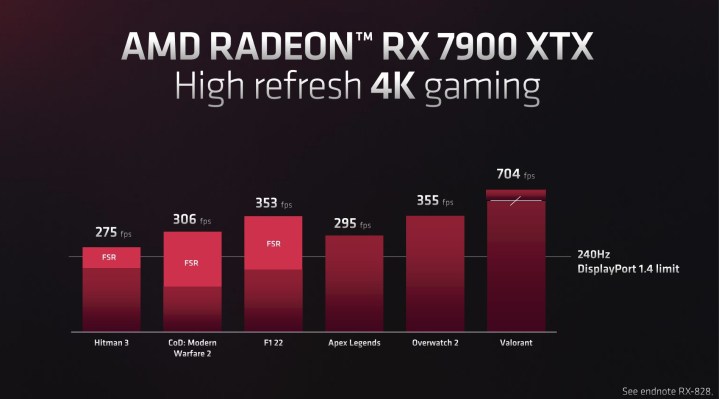
AMD was light on raw performance numbers, but it still shared that the RX 7900 XTX can deliver 295 frames per second (fps) in Apex Legends and 355 fps in Overwatch 2 at 4K. The company also shared 8K performance numbers, with the RX 7900 XTX delivering 96 fps in Assassin’s Creed Valhalla and 73 fps in Uncharted Legacy of Thieves Collection, though with some major assistance from FSR.
Ray tracing performance is seeing a large uplift over the previous generation as well. In Cyberpunk 2077 at 4K Ultra ray tracing settings, the RX 7900 XTX delivers 62 fps with FSR, which compares to 42 fps on the RX 6950 XT. Similarly, Hitman 3 jumps from 57 fps to 89 fps with FSR. We’ll have to wait until the cards are in hand to verify these numbers though, and to see how the cards perform with FSR turned off.
Finally, AMD called out Nvidia’s recent troubles with melting 12-pin power connectors. The reference designs for the RX 7900 XTX and RX 7900 XT feature dual 8-pin power connectors, though the company strongly suggested board partner cards may use more connectors for higher overclocking headroom. The cards aren’t too large, either. The reference design is almost identical to the previous generation, taking up two-and-a-half slots in our case.
Although power demands have been rising for GPUs in general, AMD didn’t go as far as Nvidia with its new GPUs. The RX 7900 XTX tops out at 355 watts, while the RX 7900 XT is slightly lower at 300W.
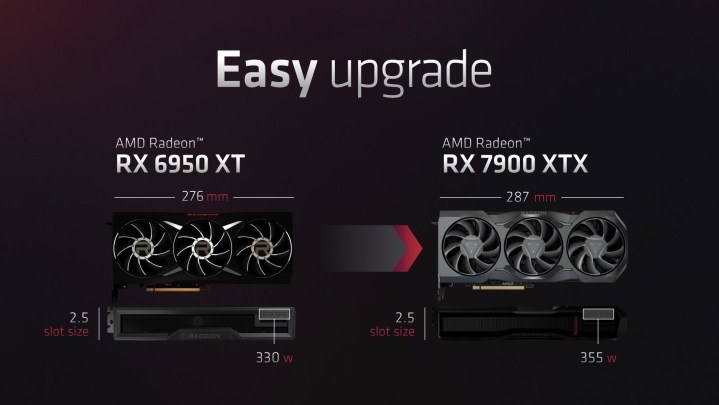
Other spec improvements include 24GB of GDDR6 memory on the RX 7900 XTX and 20GB of GDDR6 on the RX 7900 XT. You can see a full breakdown of the specs for these two new cards below.
| RX 7900 XTX | RX 7900 XT | |
| Compute Units | 96 | 84 |
| AI accelerators | 192 | 168 |
| Ray tracing accelerators | 96 | 84 |
| Memory | 24GB GDDR6 | 20GB GDDR6 |
| Memory speed | 20Gbps | 20Gbps |
| Memory bus size | 384-bit | 320-bit |
| Game clock speed | 2.3GHz | 2GHz |
| Connection support | DisplayPort 2.1 | DisplayPort 2.1 |
| Total board power | 355W | 300W |
| List price | $1,000 | $900 |
| Release date | December 13, 2022 | December 13, 2022 |
It’s not clear how AMD’s new chips will stack up to the RTX 4090, but it seems Nvidia will still have the lead in overall performance. AMD seems to be targeting value shoppers more, offering its flagship GPU for $600 less than Nvidia. As for how the card will hold up in terms of performance and value, we’ll just have to wait until they’re here on December 13.
